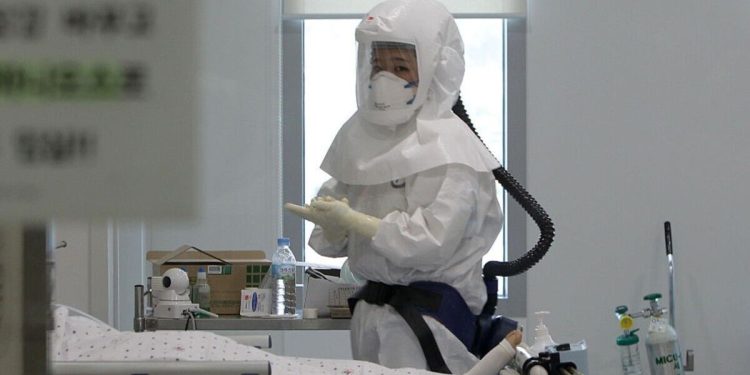Scientists have warned that a new dangerous coronavirus China could trigger the next pandemic. The new HKU5-COV-2 virus is just a “small” mutation far from being able to spread to man and cause fatal infections that could kill many people.
Pathogen is closely linked to ShrewA deadly virus that kills up to a third of infected people. HKU5-COV-2 was documented for the first time by the Chinese laboratorysuspected of fleeing Covid in the environment and trigger the pandemic 2020.
Researchers from the Washington State University have made a series of laboratory experiences to see how the new virus interacts with human cells.
Professor Michael Letko, a virologist co-directed on the study, said: “HKU5 viruses in particular had not really been examined, but our study shows how these viruses infect cells.
“What we have also found is that HKU5 viruses can be a small step of being able to spread in humans.”
Experiments have revealed that a small change in the advanced protein of the virus could allow it to bind to human ACE2 cells, which are in the throat, the mouths and the nose of people.
The HKU5-COV-2 strain was collected in a small subset of hundreds of skimmed bats in the southern and eastern regions of China.
Currently, the virus is only spreading among bats, but experts fear that the non-regulated wildlife trade in China increases the risk that it can mutate in a form which can then be easily spread in humans.
Professor Letko added that the similarity between Mers and HKU5-COV-2 was a concern.
“Although there is no evidence that they have still crossed people, the potential is there and it is worth looking at,” he said.
The seas appeared in 2012 and affected several countries, mainly in the Middle East.
Most patients develop symptoms about five days after exposure to a person or an infected camel, but the incubation period can range from 2 to 14 days.
In hospitalized patients in the seas, the median time from the start of the symptoms to the hospitalization of a person is approximately 4 days.
From April 2012 to date, a total of 2,626 laboratory confirmed sea cases have been reported worldwide, with 947 deaths associated with a case -fat (CFR) ratio of 36% – according to WHO.
The majority of these cases were reported in Saudi Arabia, with 2,217 cases and 866 related deaths (CFR: 39%).


